The Eclipse foundation has recently done its IoT Developer Survey answered by 713 developers, where they asked IoT programming languages, cloud platforms, IoT operating systems, messaging protocols (MQTT, HTTP), IoT hardware architectures and more. The results have now been published. So let’s have a look at some of the slides, especially with regards to programming languages and operating systems bearing in mind that IoT is a general terms that may apply to sensors, gateways and the cloud, so the survey correctly separated languages for different segments of the IoT ecosystem.
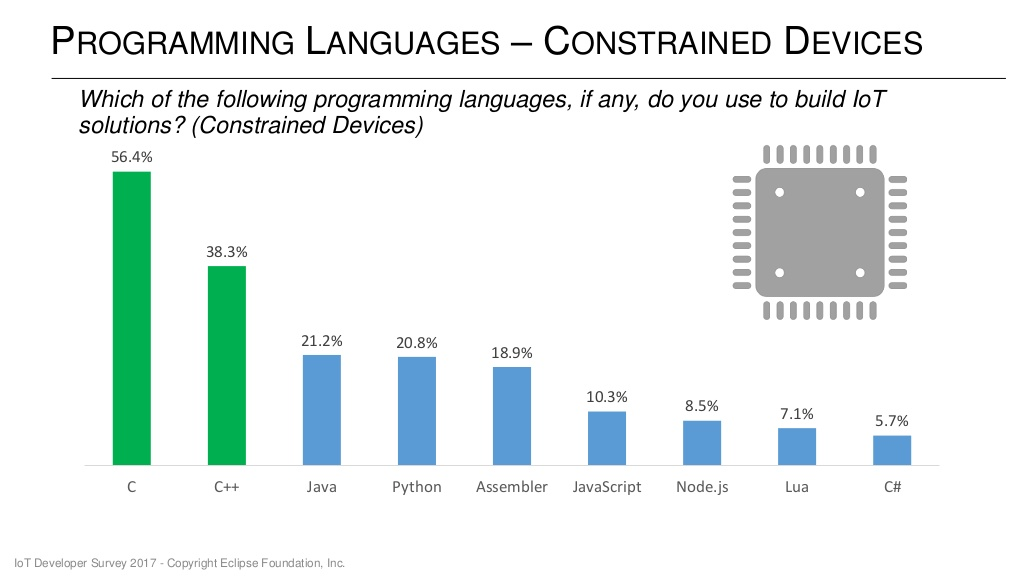
C and C++ are still the preferred languages for constrained devices, and developers are normally using more than one language as the total is well over 100%.

IoT gateways are more powerful and resourceful (memory/storage) hardware, so it’s no surprise higher level languages like Java and Python join C and C++, with Java being the most used language with 40.8% of respondents.
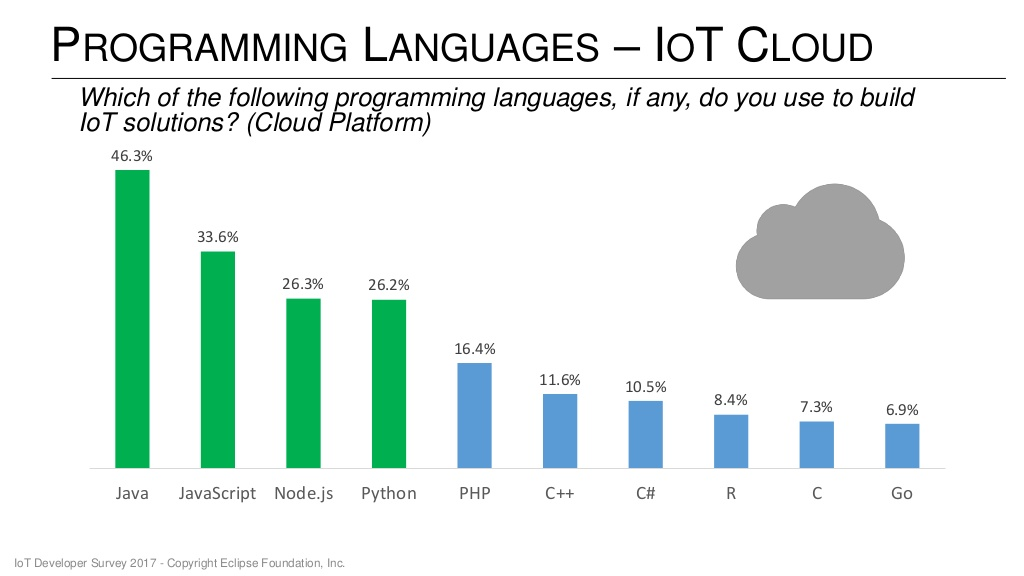
When it comes to the cloud with virtually unlimited resources, and no need to interface with hardware in most cases, higher level languages like Java, JavaScript, Node.js, and Python take the lead.
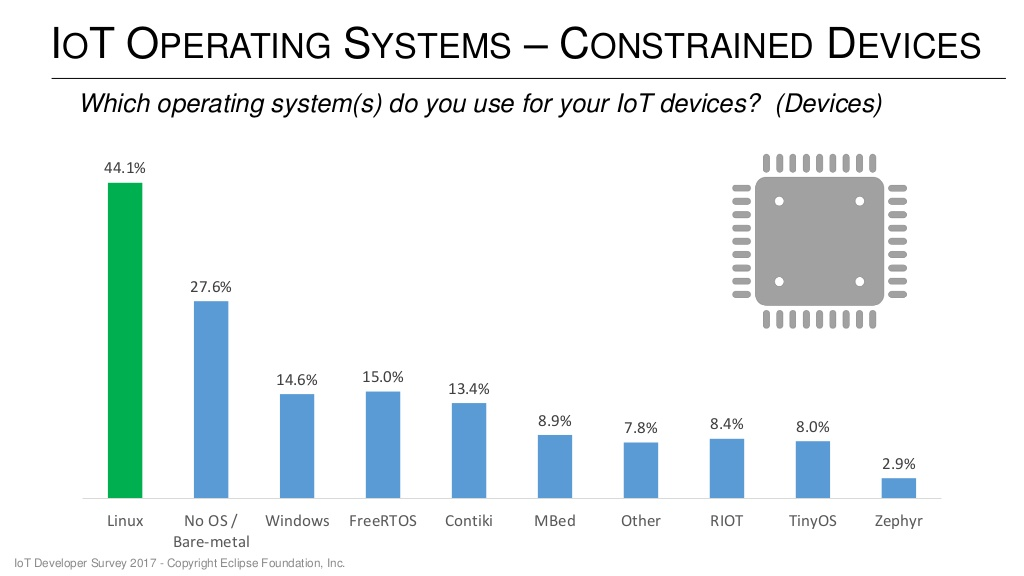
When it comes to operating systems in constrained IoT devices, Linux takes the lead with 44.1%, in front of bare metal (27.6%) and FreeRTOS (15.0 %). Windows is also there in fourth place probably with a mix of Windows IoT core, Windows Embedded, and WinCE.
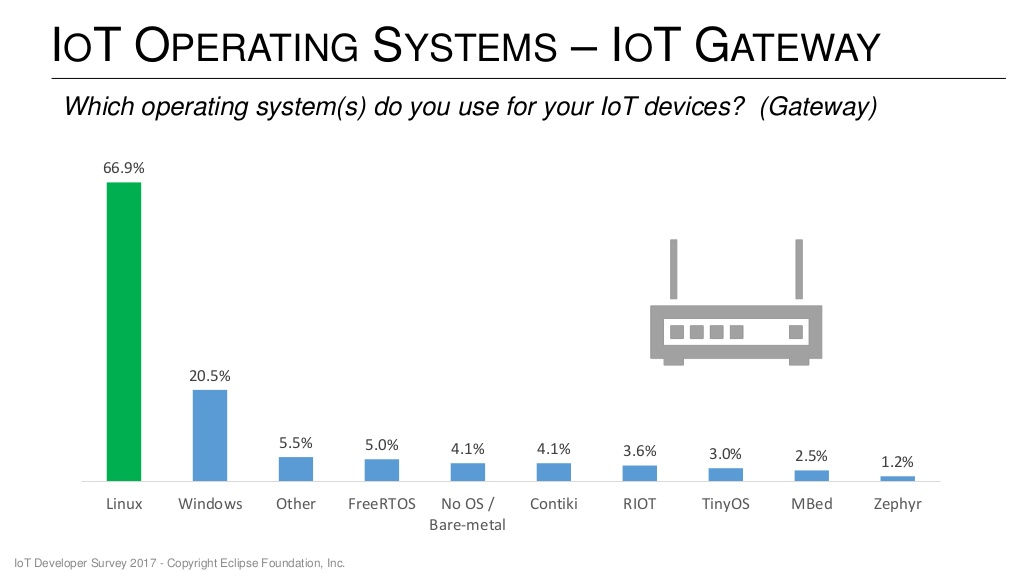
Linux is the king of IoT gateways with 66.9% of respondent using it far ahead of Windows in second place with 20.5%. They have no chart for the cloud, probably because users just don’t run their own Cloud servers, but relies on providers. They did ask specifically about the Linux distributions used for IoT projects, and the results are a bit surprising with Raspbian taking the lead with 45.5%, with Ubuntu Core following closely at 44.4%.
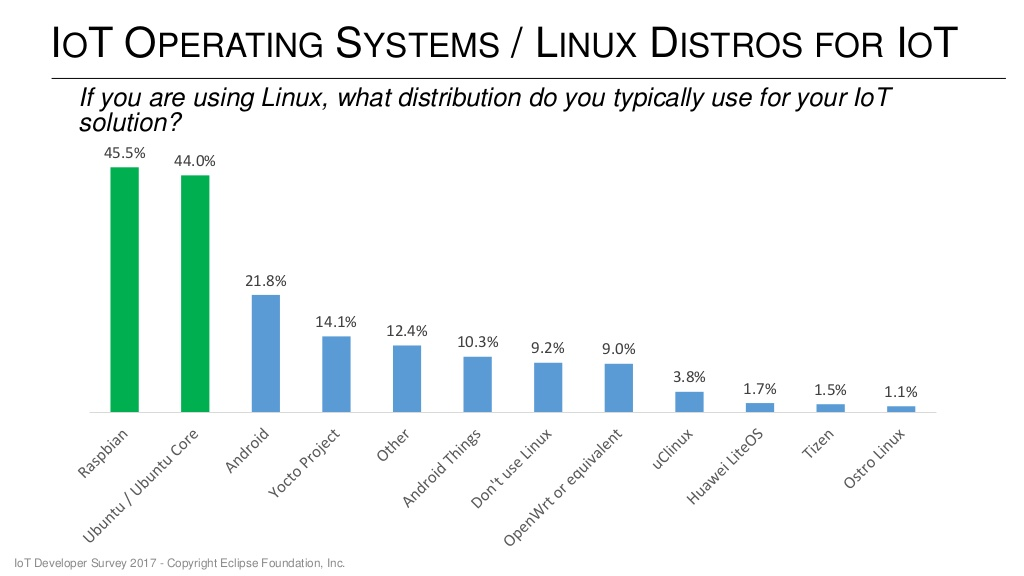
Maybe Raspbian has been used during the prototyping phase or for evaluation, as most developers (84%) have been using cheap development boards like Arduino, BeagleBone or Raspberry Pi. 20% also claim to have deployed such boards in IoT solutions.
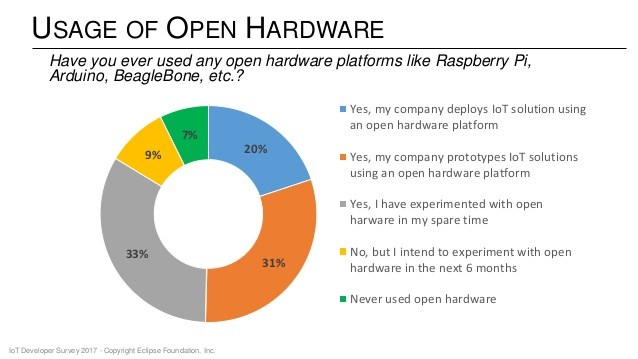
That’s only a few slides of the survey results, and you’ll find more details about Intel/ARM hardware share, messaging & industrial protocols, cloud solutions, wireless connectivity, and more in the slides below.
Via Ubuntu Insights

Jean-Luc started CNX Software in 2010 as a part-time endeavor, before quitting his job as a software engineering manager, and starting to write daily news, and reviews full time later in 2011.
Support CNX Software! Donate via cryptocurrencies, become a Patron on Patreon, or purchase goods on Amazon or Aliexpress





How is declared “constrained device”? Because seems to me that in the same bag there are devices with small microcontrollers and big SoC’s. Which implies what functions can they performing.
No sign of FrostedOS yet 🙁
I would prefer to use a transpiler (on Linux) or so called source-to-source compiler which translates to Ansi C->executables. Java was never designed with critical systems in mind.
like this one:
http://www.basic-converter.org/